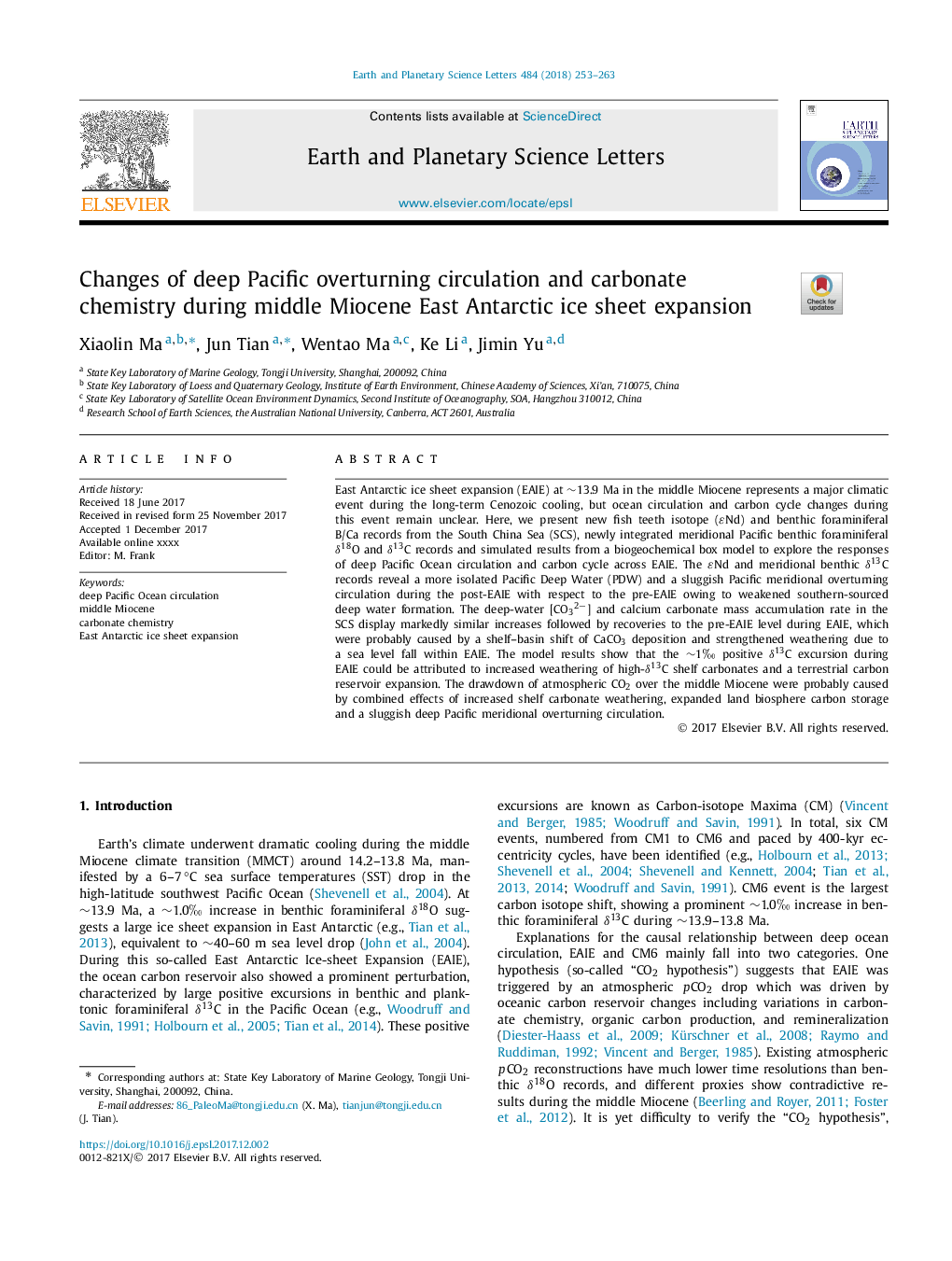| Article ID | Journal | Published Year | Pages | File Type |
|---|---|---|---|---|
| 8907163 | Earth and Planetary Science Letters | 2018 | 11 Pages |
Abstract
East Antarctic ice sheet expansion (EAIE) at â¼13.9 Ma in the middle Miocene represents a major climatic event during the long-term Cenozoic cooling, but ocean circulation and carbon cycle changes during this event remain unclear. Here, we present new fish teeth isotope (εNd) and benthic foraminiferal B/Ca records from the South China Sea (SCS), newly integrated meridional Pacific benthic foraminiferal δ18O and δ13C records and simulated results from a biogeochemical box model to explore the responses of deep Pacific Ocean circulation and carbon cycle across EAIE. The εNd and meridional benthic δ13C records reveal a more isolated Pacific Deep Water (PDW) and a sluggish Pacific meridional overturning circulation during the post-EAIE with respect to the pre-EAIE owing to weakened southern-sourced deep water formation. The deep-water [CO2â3] and calcium carbonate mass accumulation rate in the SCS display markedly similar increases followed by recoveries to the pre-EAIE level during EAIE, which were probably caused by a shelf-basin shift of CaCO3 deposition and strengthened weathering due to a sea level fall within EAIE. The model results show that the â¼1â° positive δ13C excursion during EAIE could be attributed to increased weathering of high-δ13C shelf carbonates and a terrestrial carbon reservoir expansion. The drawdown of atmospheric CO2 over the middle Miocene were probably caused by combined effects of increased shelf carbonate weathering, expanded land biosphere carbon storage and a sluggish deep Pacific meridional overturning circulation.
Keywords
Related Topics
Physical Sciences and Engineering
Earth and Planetary Sciences
Earth and Planetary Sciences (General)
Authors
Xiaolin Ma, Jun Tian, Wentao Ma, Ke Li, Jimin Yu,
